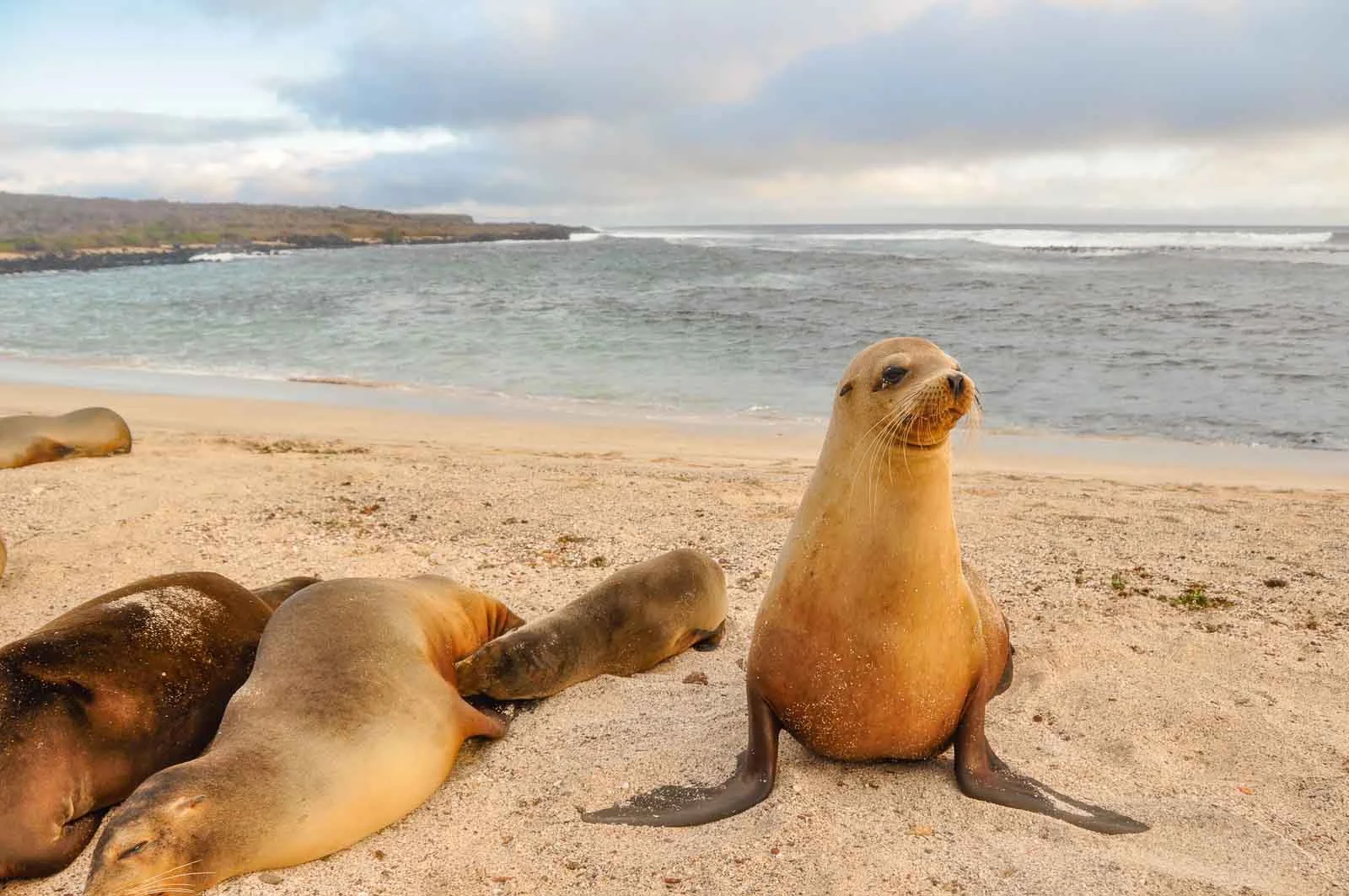
What Are Galapagos Islands Famous For? Discovering Nature's Wonders | Travel Blog
What Are Galapagos Islands Famous For? Discovering Nature's Wonders
Wondering what are Galapagos Islands famous for?
When it comes to natural wonders and biodiversity, few places on Earth can rival the Galapagos Islands. This remote archipelago, nestled in the Pacific Ocean, has gained worldwide recognition for its unparalleled ecological significance.
From the iconic giant tortoises and blue-footed boobies to its volcanic landscapes and unique marine life, the Galapagos Islands have become famous for their awe-inspiring natural marvels.
Table of content
- Iconic giant tortoises
- Blue-footed boobies
- Enigmatic marine iguanas
- Volcanic landscapes
- Remarkable snorkeling and diving
- Charles darwin's legacy
- Unique wildlife
- Pristine beaches and crystal-clear waters
- Unspoiled ecosystems and conservation success
- Limitless opportunities for exploration
What makes the Galapagos Islands famous?
What is the significance of Charles Darwin to the Galapagos Islands?
Are the Galapagos Islands a UNESCO World Heritage Site?
Can I see penguins in the Galapagos Islands?
1. Iconic giant tortoises
One of the first images that come to mind when thinking about the Galapagos Islands is that of the majestic giant tortoises. These gentle giants, known for their slow pace and longevity, are a symbol of the archipelago's unique biodiversity.
Each island is home to a distinct species of giant tortoise, making them a fascinating subject of study for researchers and a delight for visitors.

2. Blue-footed boobies
The Galapagos Islands are renowned for their birdlife, and the blue-footed booby takes center stage in this avian extravaganza. These quirky seabirds with their vibrant blue feet perform captivating courtship dances, leaving visitors in awe of nature's comedic showmanship.
Witnessing their synchronized sky-pointing ritual is a must-do on any Galapagos journey.

3. Enigmatic marine iguanas
The Galapagos marine iguana is a remarkable example of adaptation. These reptiles have evolved to become the world's only seafaring lizards, and they are famous for their ability to dive into the ocean to feed on algae.
It's a surreal experience to encounter them while snorkeling or diving, showcasing the islands' unique blend of terrestrial and marine life.

4. Volcanic landscapes
Beyond its wildlife, the Galapagos are celebrated for their otherworldly volcanic landscapes. The archipelago's geology is a testament to the Earth's fiery history, and visitors can explore lava tunnels, volcanic craters, and dramatic lava flows.
Bartolome Island, with its iconic Pinnacle Rock, offers a surreal lunar-like experience that's a photographer's dream.
5. Remarkable snorkeling and diving
The Galapagos Islands are not just famous for their terrestrial wonders; their underwater world is equally mesmerizing.
Thriving coral reefs, schools of colorful fish, and encounters with hammerhead sharks, manta rays, and sea turtles make snorkeling and diving here an unforgettable adventure.

6. Charles darwin's legacy
The Galapagos Islands are forever linked to Charles Darwin and his groundbreaking theory of evolution. His observations of the islands' unique species and their adaptations played a pivotal role in the development of his theory.
Today, visitors can explore the Charles Darwin Research Station on Santa Cruz Island, where ongoing research and conservation efforts carry on his legacy.
7. Unique wildlife
Beyond the famous species, the Galapagos Islands are home to an array of unique wildlife. Witness the flightless cormorants, the only cormorants that have lost their ability to fly due to evolution.
Encounter the Galapagos penguins, the only penguins living north of the equator. These extraordinary creatures are living testaments to the islands' remarkable biodiversity.

8. Pristine beaches and crystal-clear waters
The Galapagos Islands are not just about wildlife; they offer some of the most pristine beaches in the world. From the white sands of Tortuga Bay to the red beaches of Rabida Island, these shores provide idyllic settings for relaxation and exploration.
The crystal-clear waters make for excellent swimming, snorkeling, and beachcombing experiences.

9. Unspoiled ecosystems and conservation success
The Galapagos Islands have become famous not only for their natural wonders but also for their commitment to conservation. The islands have been designated a UNESCO World Heritage site and a marine reserve.
Conservation efforts have led to the remarkable recovery of endangered species, such as the Galapagos giant tortoise. Visitors can witness firsthand the success of these ongoing conservation initiatives.
10. Limitless opportunities for exploration
In the Galapagos Islands, exploration knows no bounds. Whether you're hiking to volcanic craters, kayaking through mangrove forests, or simply strolling along pristine beaches, the islands offer limitless opportunities for discovery.
Each day brings new adventures, and the thrill of exploring this unique ecosystem is what truly makes the Galapagos famous.
Frequently asked questions
What makes the Galapagos Islands famous?
The Galapagos Islands are famous for their unique biodiversity and association with Charles Darwin's theory of evolution. They are renowned for iconic species like giant tortoises, blue-footed boobies, and marine iguanas.
What is the significance of Charles Darwin to the Galapagos Islands?
Charles Darwin's visit to the Galapagos Islands in 1835 played a pivotal role in the development of his theory of evolution by natural selection. His observations of the islands' diverse species and their adaptations influenced his groundbreaking work, "On the Origin of Species."
Are the Galapagos Islands a UNESCO World Heritage Site?
Yes, the Galapagos Islands have been designated as a UNESCO World Heritage Site since 1978. They are recognized for their exceptional biodiversity and importance in understanding the natural world.
Can I see penguins in the Galapagos Islands?
Yes, the Galapagos Islands are home to the Galapagos penguin, the only species of penguin found north of the equator. Visitors can observe these unique penguins in their natural habitat.
What are some lesser-known species famous in the Galapagos?
In addition to the famous species, the Galapagos Islands are home to unique wildlife like flightless cormorants, Galapagos sea lions, and waved albatrosses. These lesser-known species contribute to the islands' remarkable biodiversity and fame.
Conclusion
The Galapagos Islands are famous for many things, but above all, they are celebrated for their role in reshaping our understanding of the natural world. These islands are a living laboratory of evolution, where visitors can witness the remarkable adaptations of species to their unique environments.
From giant tortoises to blue-footed boobies, from volcanic landscapes to underwater paradises, the Galapagos Islands continue to captivate and inspire those who seek to discover nature's wonders in their purest form.
As you plan your Galapagos adventure, remember that these islands are not just famous for their iconic residents; they are also a testament to the importance of conservation. The Galapagos Islands have shown us the delicate balance of life on Earth, making them not just famous but truly invaluable in our quest to protect and preserve the natural world.
Check Our Suggested Tours:
- Bucketlist Galápagos
- Galapagos liveaboard diving cruise exploring the Gálapagos marine reserve
- Luxury and exclusive Galapagos Cruise to enjoy it with family and friends
- Elite Catamaran Galapagos Islands luxury cruise 8 days eastern & western route
- Eastern Galapagos Explorer 8-Day Cruise from San Cristóbal
- Itinerary F Endemic Cruise
Check Our Galapagos Cruises:


